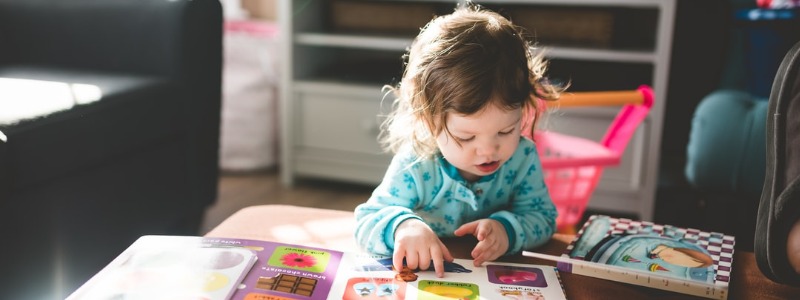There are endless benefits to exposing children to the arts in Austin. Study after study cite the positive impact that exposure to the arts has on kids: increased community and school engagement, higher literacy levels, better fine motor skills, greater empathy, just to name a few. Never once have I seen a study saying that the arts don’t benefit kids!
Here are 10 easy ways that your family can engage with the arts
Given how amazing the arts are for kids – for all of us, actually – my belief is that the arts should be part of a family’s every single day. If I just lost you there because, come on, after jobs, school, laundry, sports, and making dinner, there is no time for the arts every day, I would love to try to convince you that this is not as difficult, time consuming, or expensive as it might sound.
1. Explore public art
You don’t have to go to an art gallery to see visual art. If you start looking around, you will probably start to see art all around you. Look for sculptures in the park, in public squares, or in office building foyers? Do you ever pass a wall with a street art mural? How about a painting hanging in your bank’s lobby?

These are all opportunities to stop and have even a short conversation with your kids. For pre-school age kids, ask them what colors or shapes they see. With school aged kids, you might ask them something like what materials they think the artist used, or have them use their imagination by engaging with questions like, “if that sculpture could talk, what kind of voice would it have?” or “where do you think the character in that painting is going right after this moment?”. These don’t have to be long conversations, but just enough to draw all of your attention to the art, make you see it in a new way, and remember to keep looking for art everywhere!
2. Galleries – the kid-friendly way
I know that the thought of entering an art gallery with kids makes many parents internally scream “noooo!”. If you want to try facing a gallery-phobia, set your family up for success by going the kid-friendly way. One great advancement of the past few years is that so many major galleries now have children’s activities or even entire spaces dedicated to kids. Check your local galleries before you go to see what is on offer.

If you don’t find anything, still have a look around, but I suggest keeping the trip short. Most kids can look at art for a short time – perhaps two or three rooms. Most kids cannot make a whole day of it. And, don’t go past small, local galleries that you’ll find in most communities. They may not be as widely known, but they are often great, and the exhibits will be more contained, so you can see something interesting, and still get in and out.
For more tips on visiting galleries with kids, I have written about questions to ask a pre-schooler in an art gallery, and for school aged kids, this article by a New York City tour guide is full of inspiration for helping students get the most out of a gallery experience.
3. Stop for street musicians
Do you stop when you pass street musicians in your town or when you’re travelling, or do you just rush past? Take a few minutes to stop, especially with kids. The musicians may not be symphony hall quality – or, they might be, we’ve seen some amazing ones – but, stopping to listen shows an appreciation for music. You might see an instrument you’ve never seen, or see a conventional instrument played in a new way. You might see kids brave enough to put themselves in the public eye.You might just hear some fun pop standards that make you smile. I loved when my daughter was little enough to be uninhibited to dance in the middle of the sidewalk whenever we saw a street musician. And, make sure to give your kids a few coins to drop in the musicians’ hat.
4. Find great performances on YouTube
YouTube and kids – it’s not just for watching toy unwrapping videos! You can watch the Mariinsky Ballet’s Swan Lake in its entirety. See Regina Carter’s “Tiny Desk concert,” where she combines violin with accordion and an African kora to make something truly original. Or, head to the West End to revel in the puppet magic with a song from The Lion King. I just showed my fledgling piano student daughter Elton John playing I’m Still Standing to show her why piano is important! There is really no end to the high quality arts videos you can watch for free in your own living room.
5. Learn a Dance
Speaking of things you can do on YouTube, how about having an epic Friday night living room dance party with everyone learning a new dance? You could go with a classic like the cha-cha or some fun, energetic pop. A family dance lesson is sure to get everyone moving and laughing together.
6. . Go to a book launch
Have you ever been to a book launch? For kids’ books, they tend to be joyful afternoons with a short talk, a reading, and maybe a game or activity with the author. They are often free, aside from the cost of the book, which you’ll surely want to buy and have signed. Meeting an author and getting a personal connection to a book is a memorable experience for a child, connecting them to the work of that author and reading, in general. To find out about book launches, get on the email lists or social media of your local bookshops and favorite local authors. Writer’s festivals and library events are also great ways to meet authors and illustrators.
7. “What instrument?” car game
On a car trip, turn on the classical or classic jazz station, and then just ask your child to name what instruments they hear. Both you and your kids will become musical detectives, and the more often you play, they better you’ll become. It’s as simple as car games can get to pass some drive time, and it’s music appreciation, as well!
8. Have Art Supplies available
The act of creating is fundamentally important for children. Not all parents are comfortable with or have time for setting up Pinterest-style craft activities, but I so encourage you to keep some creative materials always available to your kids, in a place where they can reach them without needing you to set things up.

At our place, the toddler has access to pens, crayons, and paper (we’ve done a lot of “no drawing on books/the wall” talks, though there have been occasional casualties as part of the learning process). The 6 year old has those, plus scissors, rulers, magazines, glue, tape, and cardboard recycling. We do bigger “set ups,” as well, but when they have access to materials, they can create at any time the inspiration strikes.
9. Listen to “family music”
Listen to music with your kids, full stop. But, I’d like to make a case for making some of that music children’s or “family” music. Children’s musician Benny Time explained it perfectly when I interviewed him:
“The reality is, they (children) don’t have a lot of control over their lives. Having moments within this powerless environment whereby something or someone is specifically talking to them, catering only to them, and nurturing their own personal questioning, is incredibly empowering. It kinda says ‘hey, we hear you’.“
In other words, a song about a dancing hippo or learning how to tie their shoes is far more relevant to a child than songs about relationships and breaks-ups. I hear you saying, “I don’t do kid’s music” because you’re thinking about that children’s band whose music makes you reach for the noise cancelling headphones. Fair enough, but I think all families need to know about the growing trend of “family music,” which is to say “music for kids that everyone can listen to.” Try out the silly world of Caspar Babypants (former frontman of The Presidents of the United States of America), the Appalachian magic of The Okee Dokee Brothers, the jazz virtuosity of Lucy Kalantari and the Jazz Cats, or the cool and wise Teeny Tiny Stevies. I guarantee there is something in there that you can your kids can agree on.
10. Read, read, read
If you don’t manage any other arts activities for the day/week/month, make time for reading with your kids every day. Reading promotes a love of language and literature. It teaches about critical thinking and empathy. Picture books are most children’s first and most consistent exposure to art, and good golly there a lot of gorgeous picture books to share. And, sitting together with a book is a time of calm togetherness. So, read together every day. Read aloud, even when you think your child might be getting “too old.” Keep picture books in the repertoire to promote visual literacy, even when chapter books grab their favor. Visit the library together. Sit together for silent reading to model lifetime reading. Just read, read, read, and read some more!

Appreciation of the arts builds on itself. They more you’re exposed to the arts, the greater your experience becomes. This is why I advocate for “arts every day,” rather than just on special occasions. Trips to the theatre or big art exhibit are special and to be treasured, no question, but most of us don’t have the time or budget to do those sorts of activities all the time. Thankfully, there so are many simple ways, like the ones I’ve outlined, to make the arts an essential part of your family’s culture.
